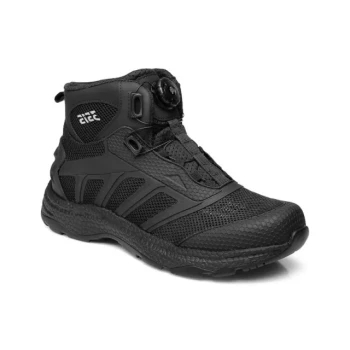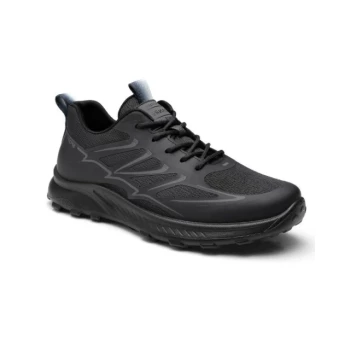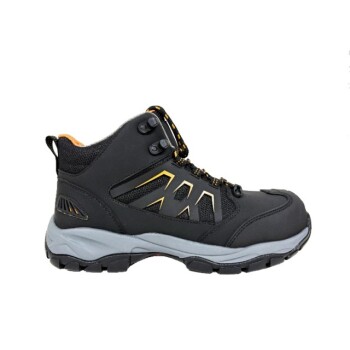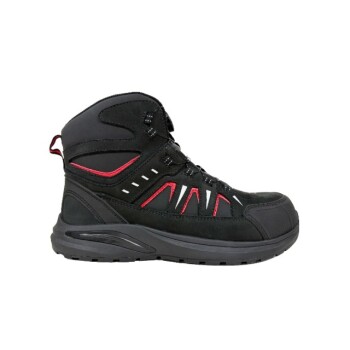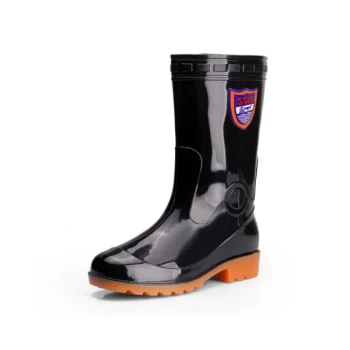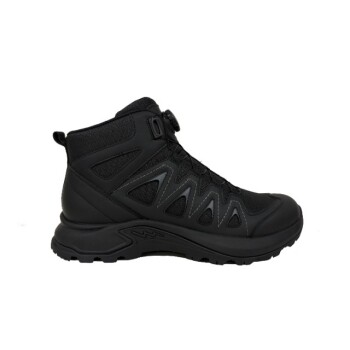Combat boots have evolved from simple protective footwear into highly specialized technological systems. Originally designed for the single purpose of durability on ancient battlefields, their development mirrors the changing nature of warfare itself. The journey has taken them from heavy, hobnailed sandals to lightweight, mission-specific boots engineered with advanced materials and a deep understanding of human biomechanics.
The core story of the combat boot's evolution is a shift from a singular focus on raw durability to a balanced system of protection, mobility, and environmental adaptation, driven directly by the changing needs of the soldier.
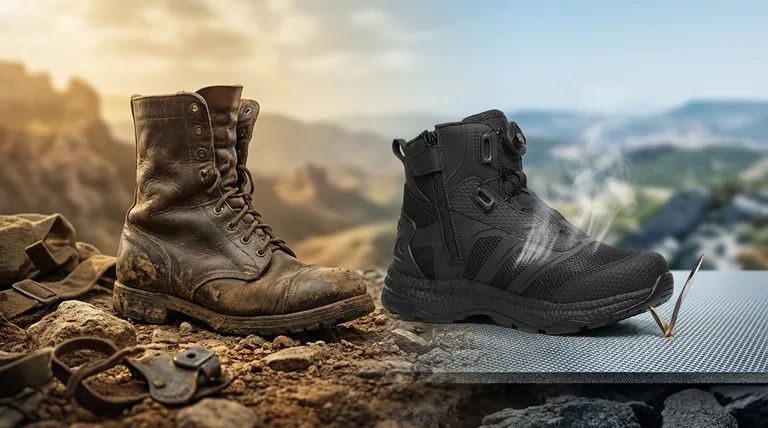
From Ancient Armor to Modern Equipment
The history of the combat boot is a direct reflection of the problems soldiers faced in different eras. Each innovation was a solution to a specific, often brutal, environmental or tactical challenge.
The Roman Blueprint: Durability First
The concept began with Roman soldiers and their caligae, a type of heavy-soled, hobnailed sandal. The design prioritized two things: durability for long marches and traction on natural terrain. This established the foundational principle of military footwear for centuries.
The Trench Warfare Era: Protection Above All
By the early 20th century, the challenges had changed. Trench warfare during World War I introduced prolonged exposure to mud, water, and shrapnel. The response was a tall, heavy, all-leather boot designed for maximum water resistance and ankle support. The primary goal was to prevent trench foot and protect against low-velocity projectiles.
The Jungle and Desert: The Rise of Specialization
Post-WWII conflicts introduced radically different environments. The jungles of Vietnam demanded boots that could breathe and drain water quickly, leading to designs incorporating canvas or nylon panels.
Later, desert warfare in the 2000s required boots that could handle intense heat and sand. This drove the transition to tan-colored suede and synthetic boots that were lighter, more breathable, and didn't absorb as much solar heat as traditional black leather.
The Core Principles of Modern Boot Design
Today's combat boots are complex systems where every component serves a distinct purpose. They are a fusion of traditional craftsmanship and modern material science.
A Foundation of Durability
Modern boots often use a combination of full-grain leather and robust synthetics like Cordura nylon. This hybrid approach provides the structural integrity and abrasion resistance of leather while using synthetics to reduce weight and improve breathability.
The Support Structure: Preventing Injury
The characteristic high-cut design provides critical ankle support. This is essential for preventing sprains and fractures when a soldier is moving quickly over uneven terrain while carrying a heavy load.
Active Protection: Toe Caps and Shanks
Many designs include reinforced toe caps to protect from impacts and crushing forces. A rigid plate, known as a shank, is often embedded in the midsole to protect the bottom of the foot from punctures by sharp objects like rebar or stakes.
Grip and Mobility: The Outsole's Role
The outsole is engineered for maximum traction. It features aggressive, multi-directional tread patterns made from specialized rubber compounds designed to grip surfaces ranging from wet rock and mud to smooth concrete.
Understanding the Trade-offs
No single boot is perfect for every situation. Every design choice represents a compromise between competing needs, a reality that engineers and soldiers must constantly navigate.
Protection vs. Weight
A heavily armored boot with a thick sole and steel toe offers maximum protection. However, this added weight directly contributes to fatigue, slowing a soldier down over long distances. Lighter boots enhance speed and reduce fatigue but sacrifice protection.
Durability vs. Breathability
A fully waterproofed leather boot is exceptionally durable and protective against the elements. Unfortunately, it also traps heat and sweat, which can lead to blisters and discomfort in hot environments. Conversely, a highly breathable boot with mesh panels keeps the foot cool but is less durable and offers minimal water resistance.
The Cost of Specialization
A boot designed specifically for desert operations will excel in hot, dry conditions but may fail completely in a cold, wet climate. This has led militaries to issue multiple types of footwear for different deployments, adding significant cost and logistical complexity.
Making the Right Choice for Your Goal
Whether for professional use or demanding recreational activities, the principles of combat boot evolution can guide your decision. Define your primary need and choose the design that prioritizes the right trade-offs.
- If your primary focus is maximum durability and protection: Seek boots with full-grain leather construction, a reinforced safety toe, and a puncture-resistant shank.
- If your primary focus is speed and comfort in hot weather: Prioritize boots made from a combination of suede and lightweight nylon panels for optimal breathability.
- If your primary focus is all-weather versatility: Look for a boot with a waterproof membrane (like Gore-Tex) that balances water resistance with a degree of breathability.
Understanding this evolution from a simple tool to a complex system empowers you to choose footwear based on function, environment, and your specific mission.
Summary Table:
| Era | Primary Challenge | Key Design Evolution |
|---|---|---|
| Ancient Rome | Long marches, traction | Heavy-soled, hobnailed sandals (Caligae) |
| WWI Trench Warfare | Mud, water, trench foot | Tall, heavy, all-leather boots for protection |
| Modern Era (Jungle/Desert) | Heat, breathability, specialization | Lightweight synthetics, specialized soles, mission-specific designs |
Need High-Performance Footwear for Your Market?
As a large-scale manufacturer, 3515 produces a comprehensive range of durable and specialized footwear for distributors, brand owners, and bulk clients. Our production capabilities encompass all types of boots, from tactical and combat designs to rugged outdoor footwear, engineered with the latest materials and construction techniques.
Partner with us to:
- Access a vast catalog of boots designed for diverse environments and applications.
- Leverage our manufacturing expertise to develop custom or private-label footwear solutions.
- Ensure reliable supply of high-quality, durable footwear for your customers.
Contact our team today to discuss your footwear needs and explore partnership opportunities.
Visual Guide

Related Products
- Wholesale Lightweight Tactical Boots with Dial Closure OEM & Bulk Orders
- Safety Footwear Wholesale Manufacturer for Custom OEM/ODM Production
- Custom OEM Training Shoes Wholesale Manufacturer Durable & Breathable
- Wholesale Safety Footwear Manufacturer for Bulk & Custom OEM Orders
- Durable Rubber Sole Outdoor Shoes Wholesale & Custom Manufacturing
People Also Ask
- What are the main benefits of tactical boots? Superior Protection, Comfort & Durability
- What are the weight and mobility differences between combat and tactical boots? Choose the Right Boot for Your Mission
- What are the key components of a tactical boot? A Guide to Performance & Durability
- Why is proper fit and comfort essential in tactical boots? Maximize Performance & Safety
- Why is lightweight and flexible material important in tactical footwear? Boost Endurance and Agility
